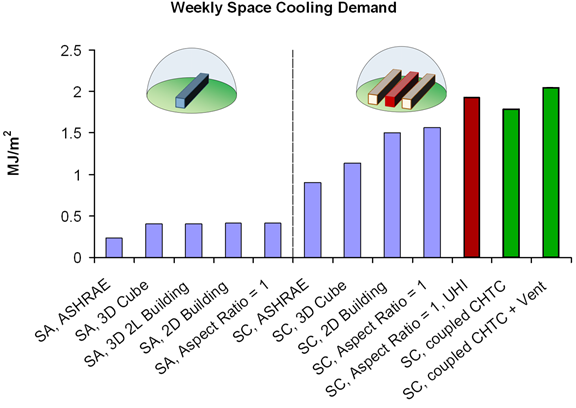Link to building energy
The impact of the local urban climate on the space cooling and heating demand of buildings is evaluated by coupling an urban climate model at street canyon scale using CFD with a building energy simulation (BES) code. Because it is still computationally too intensive to run a CFD simulation for every hour over a whole year, we explored two alternatives: (1) the use of convective heat transfer coefficient (CHTC) correlations determined from CFD simulations (Allegrini et al. 2012a and 2012b) or (2) the use of an emulation approach (Moonen and Allegrini 2015, Evins et al. 2014). The influence of radiation exchange between buildings was studied in urban areas to improve the energy demand predictions (Allegrini et al. 2016).

Publications
Allegrini J, Dorer V, Carmeliet J: Analysis of convective heat transfer at building façades in street canyons and its influence on the predictions of space cooling demand in buildings. Journal of Wind Engineering and Industrial Aerodynamics 104-106: 464-473, 2012a
Allegrini J, Dorer V, Carmeliet J: Influence of the urban microclimate in street canyons on the energy demand for space cooling and heating of buildings. Energy and Buildings 55: 823-832, 2012b
Allegrini J: Urban Climate and Energy Demand in Buildings. Diss. ETH No. 20848, ETH Zürich, Switzerland, 2012
Allegrini J, Dorer V, Carmeliet J: Impact of radiation exchange between buildings in urban street canyons on space cooling demands of buildings. Energy and Buildings 127: 1074-1084, 2016
Evins R, Allegrini J, Moonen P: Emulating Site-Specific Wind Flow Information For Use In Building Energy Simulations. Building Simulation and Optimization Conference, London, England, 2014
Moonen P, Allegrini J: Employing statistical model emulation as a surrogate for CFD. Environmental Modelling and Software 72: 77-91, 2015